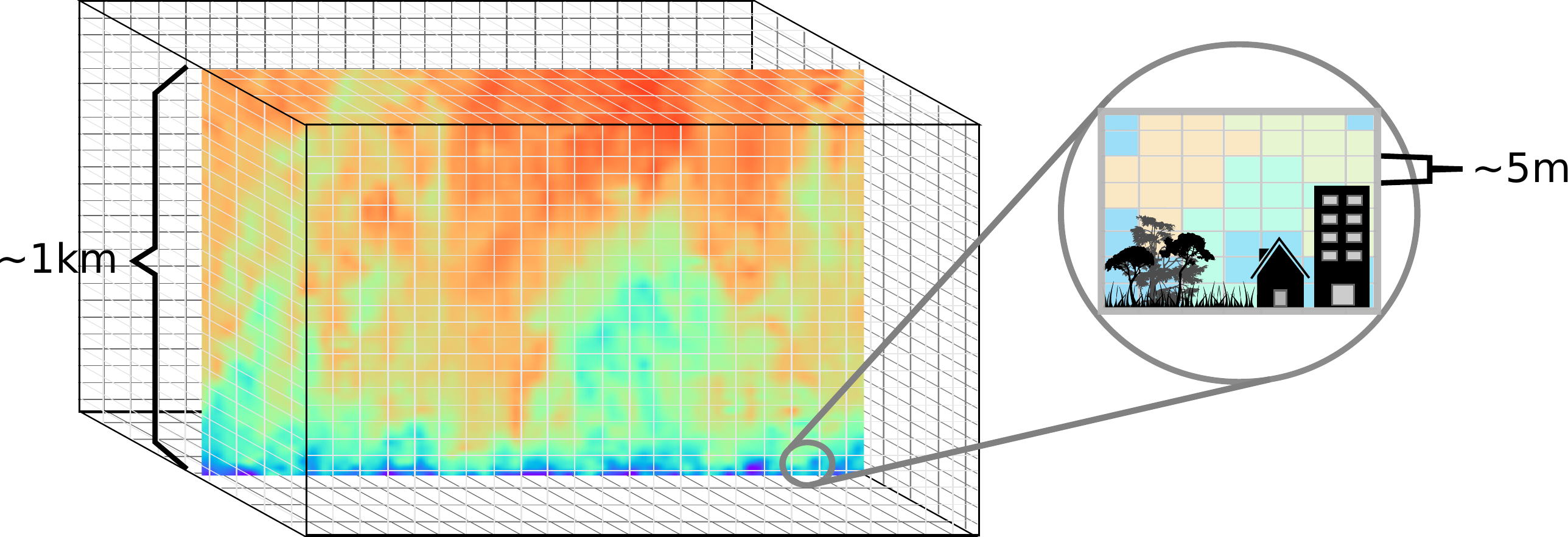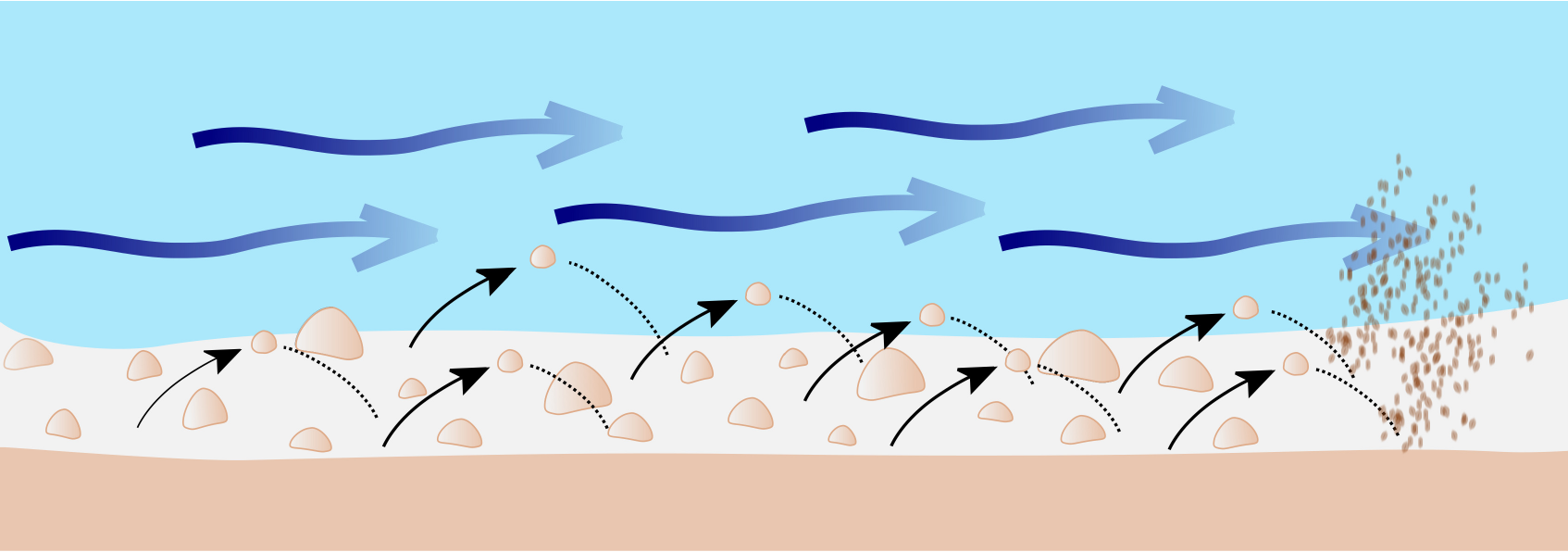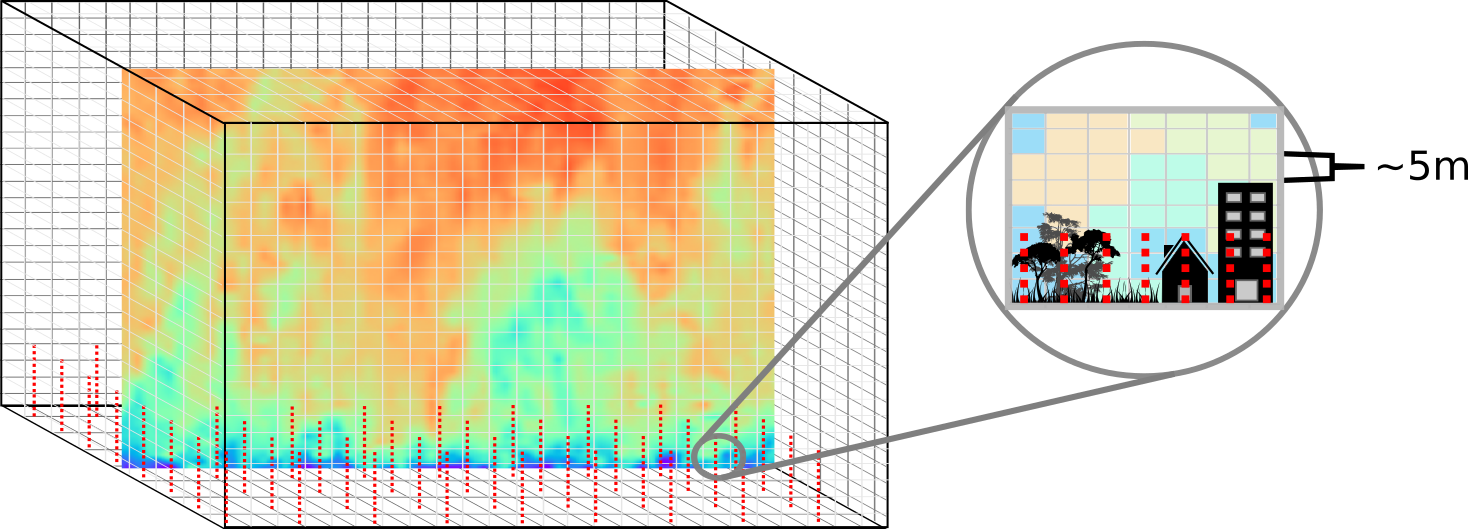Study on exchanges between earth’s surface and atmosphere using Large-Eddy Simulation
Fapesp Young Investigator Grant (18/24284-1)
In this project we are interested in improving the representation of turbulence very close to the surface in a Large-Eddy Simulation (LES) of the Atmospheric Boundary Layer (ABL). Current models typically have the lowest flow information at about one meter above ground, but many relevant processes happen below this height.

Large-Eddy Simulation of the Atmospheric Boundary Layer: as wind is simulated in a domain in the order of 1 km (flowing constantly from left to right), computational cost limits the grid resolution to the order of 1 meter.
For example, the emission of dust from the soil to the atmosphere is driven mostly by a process called saltation, in which the ballistic movement of sand particles in a layer of a few centimeters high gives smaller particles (dust) enough energy to disconnect themselves from the ground. Current models cannot simulate saltation, unless a very small domain (a few meters high) is used. This is the original motivation of this project, but many other research topics (plant-atmosphere interaction, urban flows, wave breaking, etc) can benefit from this new modeling tool.

Illustration of saltation of sand particles in a bare soil
In order to increase the vertical resolution of the flow close to the surface, we are testing the use of a one-dimensional stochastic turbulence model within each LES grid above the ground. This model (called ODT) has been previously used as LES wall-model for smooth surfaces; we attempt to use it for rough surfaces.

LES (box) with ODT (red lines) as a wall-model. While ODT simulates the flow through the surface elements (vegetation, city, etc), the LES simulates the flow in the entire ABL.
Initial results indicate a successful coupling between the two models. See a 2D cut of the simulation below (see in full screen for details). This is a simulation of a neutral channel flow, with 64 x 64 x 64 gridpoints in the LES and 32 gridpoints in each ODT. The video shows the time evolution of the streamwise velocity from the beginning of the simulation. Note the additional instantaneous flow information provided by ODT.
(Update in August/2020)
The coupling for the temperature field was also successfull, and now the code can simulate the ABL under different stability conditions. See below an example of 2D snapshot of streamwise velocity field for unstable conditions (positive heat flux at the surface generating convective turbulence).

Snapshot in the spanwise and vertical directions of the unstable simulations with and without ODT
Natural dispersion of aerosols, particles and pollutants: the role of turbulent fluctuations
Fapesp-Université de Lyon Cooperation Agreement Grant (20/06273-2)
This project, coordinated by Gustavo Buscaglia (USP/Brazil) and Mickaël Bourgoin (UDL/France), is focused on the study of particle transport in turbulent flows using laboratory experiments (performed in Lyon) and numerical simulation (performed at USP).